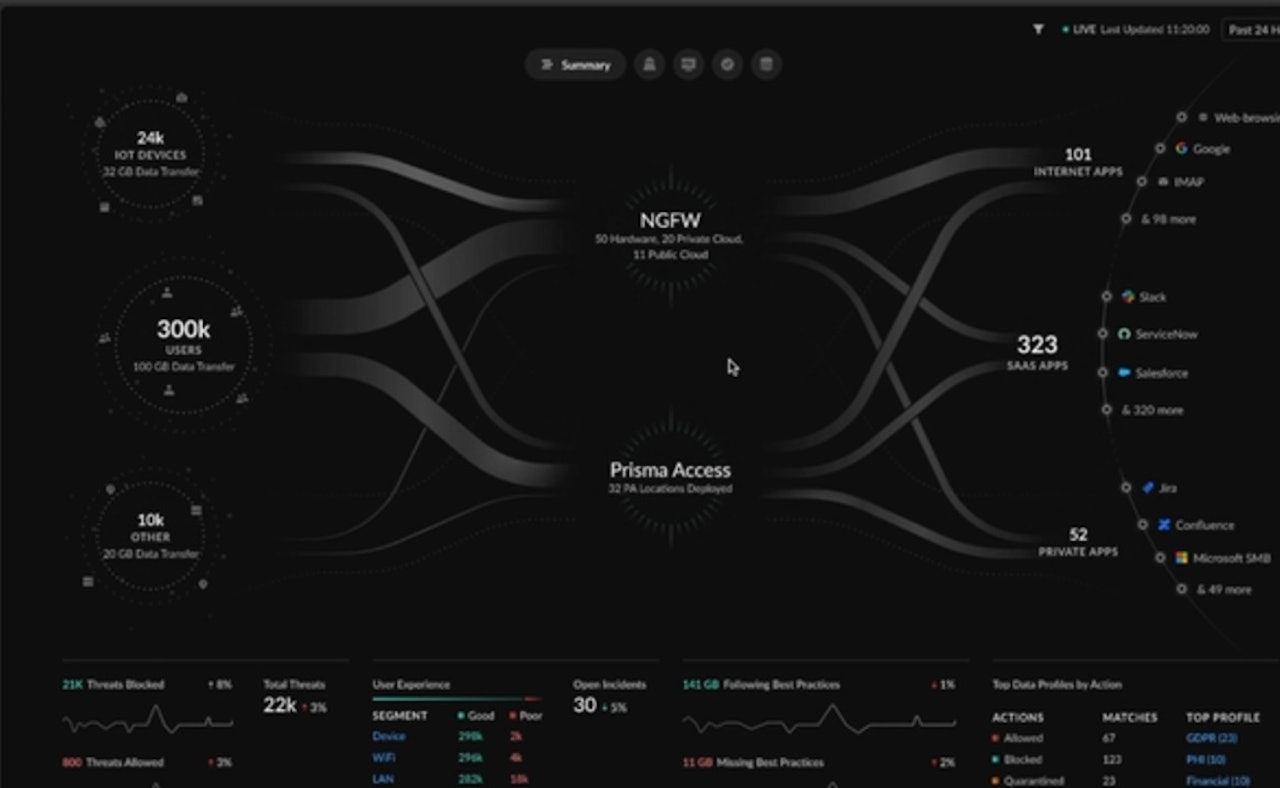No modern organisation gets ahead without a well-functioning network. From e-mail and cloud applications to telephony and security, everything runs on a stable and secure network. Network management ensures that this network remains available, reliable and protected. But what exactly does network management entail, what tasks does it cover and why is it so important for businesses?
What is network management?
Network management is the process of designing, managing, monitoring and securing IT networks. Think of all the components that connect an organisation: routers, switches, firewalls, Wi-Fi access points, endpoints and connections to the cloud. The goal is to ensure that users and applications can always communicate with each other securely and efficiently.
Network management is often confused with network security. While security is an important component, network management has a broader scope. It also includes performance management, troubleshooting, configurations and planning extensions.
Network management vs system management
Network management and system management are often mixed up, but they are two different disciplines within the broader domain of IT management. Network management focuses on the availability, performance and security of the network components that connect devices and applications. Systems management is about maintaining and managing servers, operating systems and applications themselves.
In practice, network and system administrators work closely together: a server may be well configured, but without a stable network, it is still inaccessible. Conversely, an optimal network has little value if the servers and applications do not function properly.
Tasks within network management
The day-to-day work of network administrators and IT teams consists of a variety of tasks. Main tasks include:
- Network design and implementation: planning and deploying new networks or expansions.
- Monitoring and performance management: continuous insight into availability, bandwidth and latency.
- Troubleshooting and incident handling: quick reaction to faults or errors.
- Configuration and change management: documenting and managing changes, updates and patches.
- Security management: firewalls, access control, segmentation and patch management.
- Backups and recovery: ensuring that data and configurations are immediately available after incidents.
Why is network management important?
For organisations, a reliable network is more than just convenient. It forms the basis of all business processes. Continuity plays a major role here, as downtime quickly leads to lost productivity and sometimes direct loss of revenue. Performance is also a major concern: a well-managed network prevents delays, faltering connections and employee frustration.
In addition, security is indispensable, as without proper management a network is vulnerable to attacks, malware and data leaks. Finally, good network management delivers cost savings, as proactive maintenance helps prevent costly incidents and emergencies.
Types of network management
Not every network is managed in the same way. Depending on the size and complexity, there are different approaches. Manual network management is most common in smaller networks, where a lot of human effort is required and the likelihood of errors is higher.
Automated network management uses monitoring and orchestration tools that automate routine work. In on-premises network management, the hardware and software are managed locally, whereas cloud-based network management is instead centrally controlled via the cloud, making it more easily scalable and accessible. There are also recent developments such as SASE and Zero Trust for (more) modern network management, which respond to hybrid working and cloud environments.
Tools and technologies
A network administrator cannot do their job without the right tooling. Some commonly used technologies are:
- Monitoring tools give real-time insight into traffic and performance.
- Automation and orchestration to roll out configurations and updates faster and error-free.
- AI and machine learning that automatically spot abnormal behaviour and predict incidents.
These tools enable proactive rather than reactive firefighting.
Well-known platforms often deployed for network management include Juniper Mist, HPE Aruba Networking, Fortinet FortiManager and Cisco Meraki. These solutions combine monitoring, automation and security functionality and are widely used in both medium-sized and large organisations.
The role of AI in network management
AI is taking an increasing place within network management. Whereas AI is already being used for anomaly detection and incident prediction, we see that the technology can also increasingly automate decisions. Think of automatically adjusting network traffic when there is an imminent overload, or immediately blocking suspicious activity. This not only makes networks more secure, but also more efficient and scalable.
For organisations, it means that management teams spend less time on repetitive tasks and get more room for strategic work.b
Challenges in network management
Managing networks is becoming increasingly complex. Some common challenges include:
- Hybrid and multi-cloud complexity: networks often run across multiple data centres, SaaS applications and cloud providers.
- Security and compliance: attacks are becoming more sophisticated, while laws and regulations are becoming stricter.
- Skills gap: there is a shortage of experienced network and security specialists, making it difficult for organisations to get the right knowledge in-house.
Outsourcing network management
Many organisations choose to outsource (part of) their network management to a managed service provider (MSP). Also called managed network services.
The reasons are clear. Internal IT teams often do not have the capacity to monitor everything day and night, whereas an MSP offers 24/7 monitoring and support. In addition, organisations get access to expertise from specialists experienced in complex networks, SD-WAN and security. In case of growth or changing requirements, services can easily be scaled up. Cost control also comes into play, thanks to predictable expenditure and less forced investment in internal capacity.
Outsourcing does not mean that the in-house IT department becomes redundant. On the contrary, teams can focus more on innovation and strategic projects, while the basics are monitored by an external partner.
Next step
Network management is about keeping all connections inside and outside the organisation stable, secure and efficient. Want to know how your organisation can organise network management smarter or what role managed services can play in this? Contact our experts for advice and a no-obligation discussion.
Onze netwerkpartners
Nomios works with partners to make each network work well with the right hardware and software. Together with you, we will see which of our partner suits you best.
Our team is ready for you
Do you want to know more about this topic? Leave a message or your number and we'll call you back. We are looking forward to helping you further.













